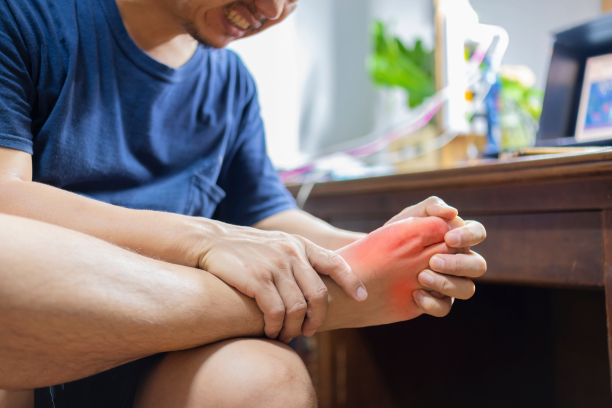2000 years ago, gout, caused by excess uric acid, was called the “Disease of Kings” because only the rich could afford the alcohol, sugar and lifestyle that caused it. But today, sugar is cheap, alcohol is everywhere, and gout (caused by dangerously high levels of uric acid) is sweeping through Indian households.
New research has shown that up to 30% of adults in India have elevated uric acid levels (hyperuricemia). Obesity, high blood pressure, and insulin resistance among the Indian population are highly correlated with this medical condition.
The problem is well understood and documented.
Gout is often attributed to lifestyle and dietary habits, primarily excessive sugar and alcohol consumption.
In this blog, we will provide an in-depth guide to understanding the causes of high uric acid levels. And why the sudden joint pain that you feel could be an early alarm.
The science: What is uric acid?
Gout is caused by elevated levels of uric acid in the body.
Uric acid is a natural waste product, formed when your body breaks down compounds called purines.
Purines themselves come from:
- Your own body’s cells (normal turnover, repair, cell death, and replacement), and
- Food, especially sugar, meat, and alcohol.
So, how does uric acid become a problem?
Usually, uric acid dissolves in your blood, travels to your kidneys, is filtered out, and is excreted from the body through urine.
Uric acid causes problems when it becomes an issue, either due to:
Too much production ===> Uric acid Concentration increases
- Genetics (family history of high uric acid or gout)
- Eating lots of purine-rich foods (red meats, liver, shellfish)
- Obesity (more tissue turnover = more purines)
- Excessive alcohol (beer & spirits increase production, reduce clearance)
- High fructose intake (cold drinks, packaged juices)
Or too little excretion ===> Uric acid Concentration increases
- Chronic dehydration (common in hot climates)
- Kidney disease (mild or advanced)
- Certain medicines (diuretics, low-dose aspirin)
- Insulin resistance (as in prediabetes & diabetes)
However, food habits and medical conditions such as obesity and insulin resistance play a significant role in altering your kidneys’ ability to process and excrete uric acid.
If uric acid builds up, it forms sharp, needle-like crystals. These crystals deposit in joints (causing gout) or in the kidneys (forming stones). This leads to crystals in joint,s causing gout attacks, OR crystals in the kidneys, → kidney stones
Consider this simple flow chart to understand
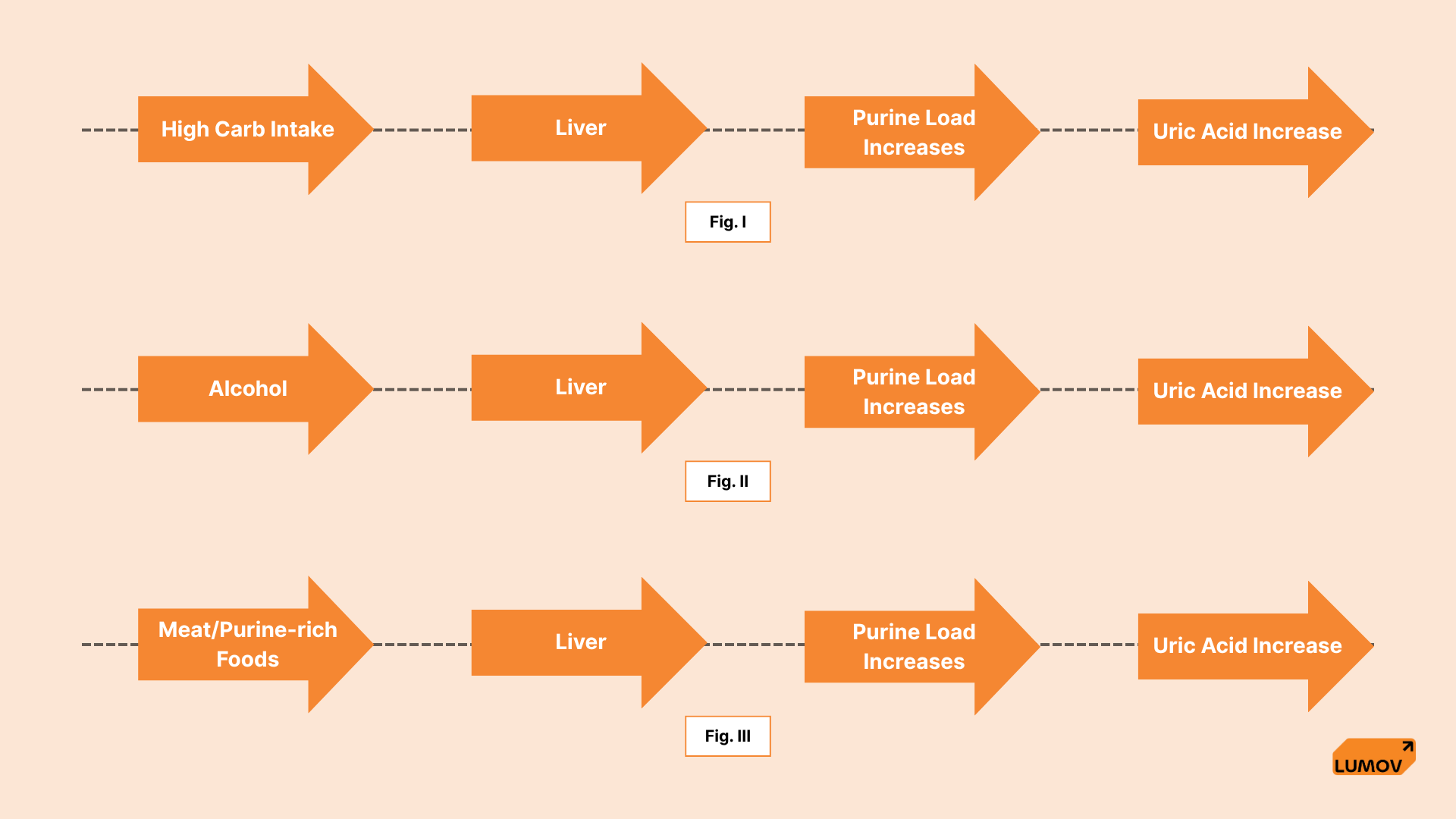
But FOOD is NOT the only reason. The reason could be environmental:

OR, it could be a medical condition:
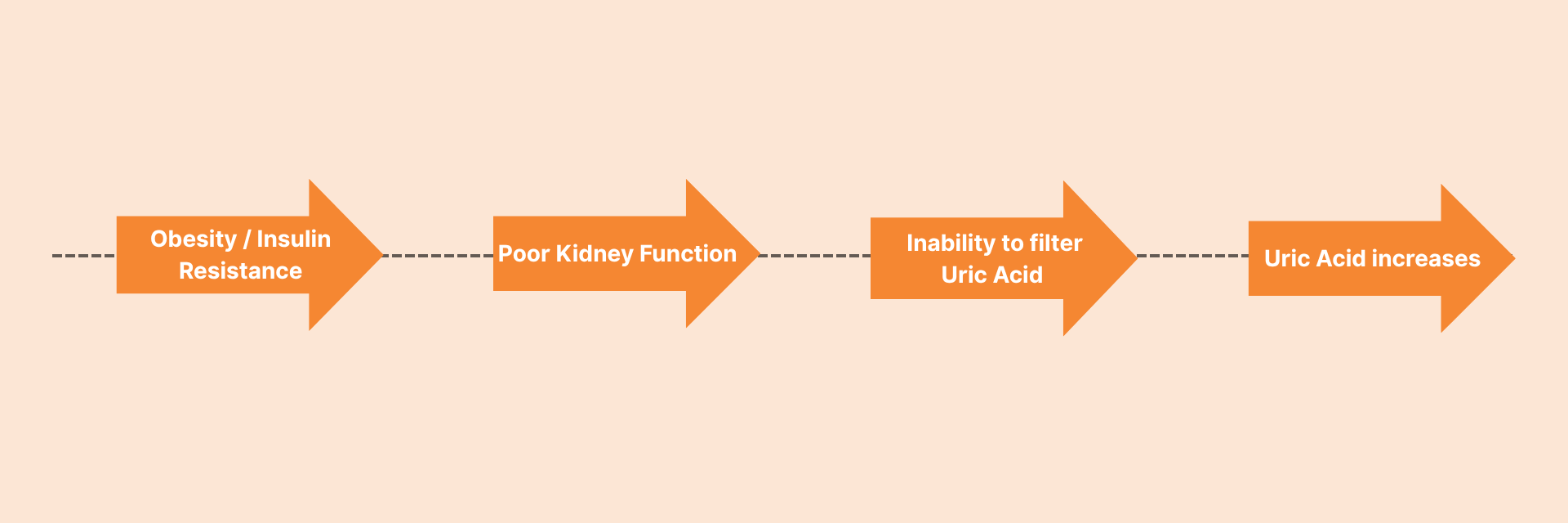
More often than not, many of these loops happen in parallel.
This imbalance leads to hyperuricemia, with an excess of uric acid in your bloodstream.
Key Symptoms: 3 things to watch out for
Acute gout attacks
Gout attacks are characterised by sudden, severe joint pain, often occurring at night. While typically starting in the big toe, other joints, such as the ankles, knees, wrists, elbows, and fingers, can also be affected. The inflamed joint becomes red, hot, swollen, and incredibly tender, to the point where even the slightest touch can be painful. A flare usually lasts up to a week, gradually easing and sometimes leaving a dull discomfort.
Chronic Phase
Repeated attacks of high uric acid involve more joints, leading to the development of tophi, hard, chalky lumps that form under the skin on elbows, ears, and fingers. This progression ultimately results in joint stiffness and deformity.
Kidney Stones
Uric acid stones can lead to a range of distressing symptoms. Individuals often experience severe pain on the side or back, which may radiate to the groin. The presence of blood in the urine is another standard indicator. Additionally, these stones can cause nausea and vomiting, alongside painful urination.
During acute attacks of elevated uric acid, individuals may experience a mild fever. Additionally, the body's attempt to excrete excess uric acid can lead to more frequent urination.
The Indian Context
Vegetarians
Many Indians feel that just because they are vegetarians, they’re safe. This is far from the truth. While it is true that a vegetarian diet is relatively lower in purine than a meat-based diet, one has to watch out for excessive carbohydrates in food. Therefore, vegetarians need to watch out for:
- High intake of specific plant foods that are moderately high in purines (paneer, masoor dal, rajma, spinach, peas, mushrooms).
- High intake of fried snacks, sweets & refined carbs. This can lead to obesity & insulin resistance, indirectly increasing uric acid levels.
Here are some tips you can incorporate:
- Incorporate low-fat milk & curd to lower uric acid levels
- Avoid excessive consumption of fried or sugary foods
- Watch the portion size of purine-rich veg foods
- Focus on dal rotation (mix different lentils),
- Lots of hydration
Non-vegetarians
Indian cuisine offers a variety of meats. These sources of protein vary significantly in purine content—meats such as mutton, liver, prawns, crabs, which are very high in purines. Safer alternatives include chicken and small fish (such as rohu, katla, and surmai), which are moderate in purine content.
Here are some tips you can incorporate:
- Cut down on the frequency of red meat and organ meat consumption (1 time per week).
- Shift to lean sources such as chicken and eggs.
- Always hydrate well.
Alcohol consumption
Alcohol significantly elevates uric acid levels. The liver converts alcohol into compounds that increase uric acid production, while the kidneys struggle to excrete it. Beer is particularly problematic due to the presence of both alcohol and purines from yeast. Other spirits, such as whiskey, rum, and vodka, also contribute, although to a lesser extent. Reducing alcohol, especially beer, is a primary recommendation for managing uric acid.
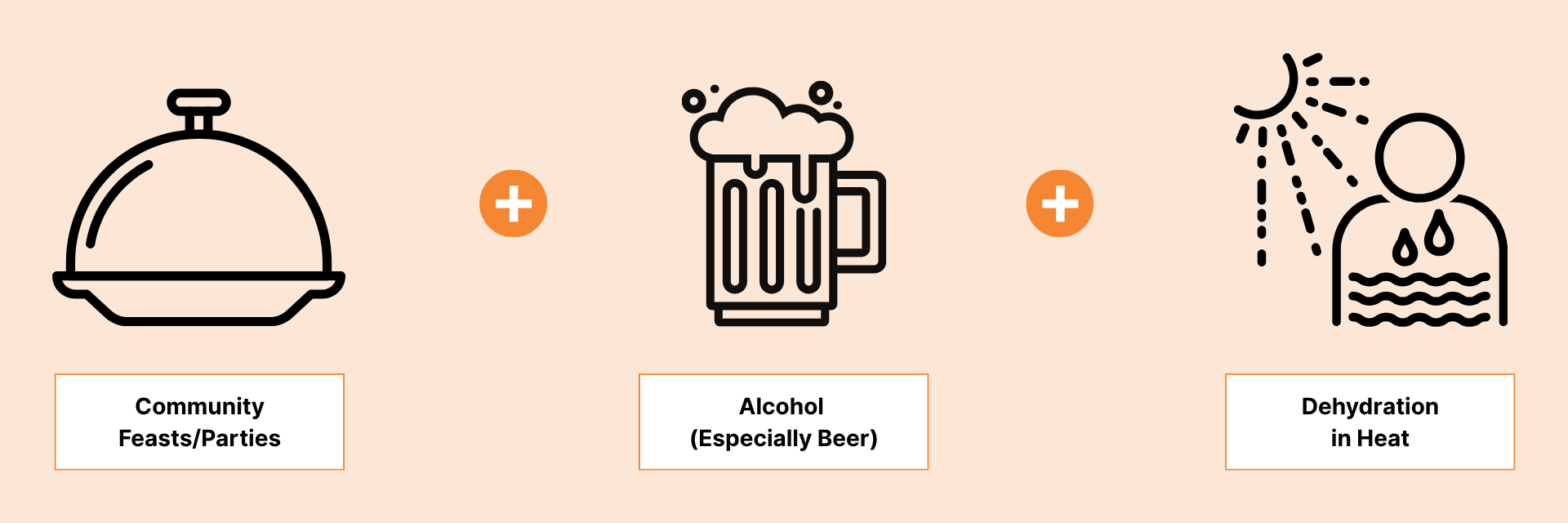
Together, all of the above are a classic combination to trigger gout.
Older adults in India – 3x higher risk
In older adults in India, gout typically manifests after the age of 40, with a higher prevalence in men.
Women are generally protected until menopause (40-45 years) due to estrogen.
It is particularly important to notice that gout often flares after retirement, attributed to reduced activity, increased diet, sweets, and unmanaged diabetes.
Here are some easy tips for older adults:
- Stay active (daily walk or yoga)
- Get sugars & creatinine checked regularly.
- Keep diet balanced, avoid binge eating & heavy drinking.
Hot climate & dehydration – 2-3x higher risk
India is a hot country with 6-8 months of temperatures above 35 degrees in large parts of the country. People often underdrink water for months, which concentrates uric acid and facilitates crystal formation. A simple rule to follow is that urine should be light yellow; if it's dark, you are under-hydrated. It is recommended to consume 2-3 litres of water per day, unless your kidney doctor advises otherwise.
Obesity and Insulin Resistance
Obesity and insulin resistance are very closely tied to high uric acid levels. Together, they create a vicious metabolic cycle.
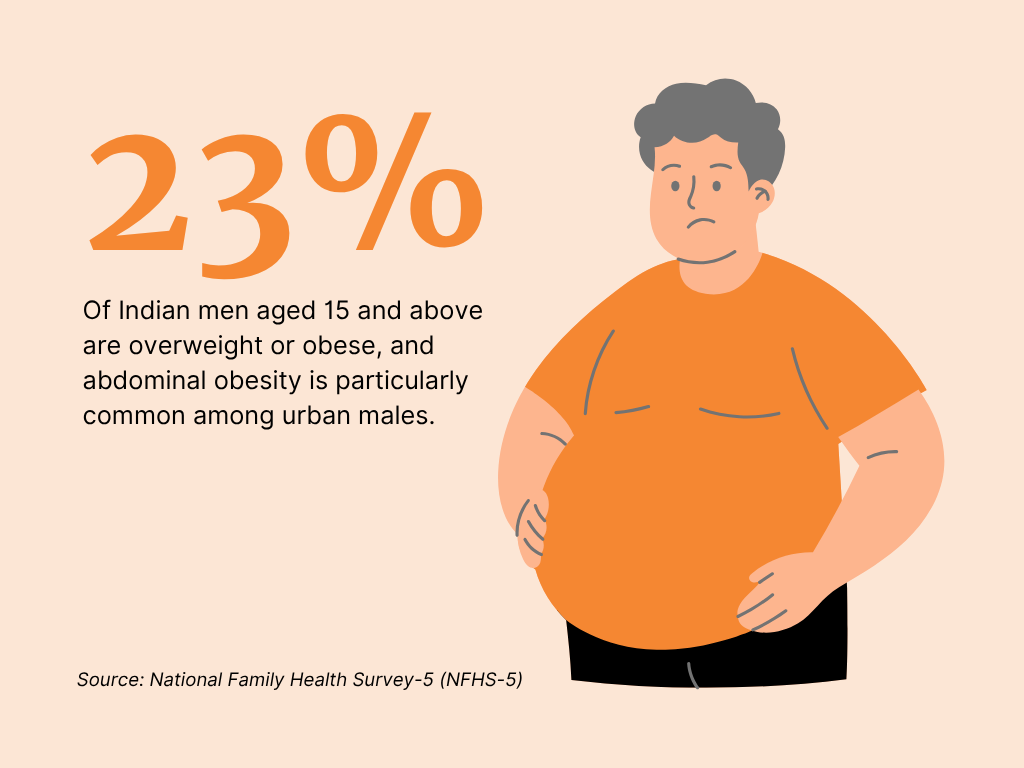
When you carry excess body fat, especially around your belly, your body often becomes less sensitive to insulin. This insulin resistance doesn’t just affect blood sugar; it also tells your kidneys to reabsorb more uric acid instead of flushing it out. As a result, uric acid accumulates in your bloodstream, raising the risk of gout and kidney stones.
At the same time, high uric acid levels can worsen insulin resistance by causing damage to tiny blood vessels and promoting chronic inflammation. This is why people with obesity and diabetes have elevated uric acid levels.
Managing weight and improving insulin sensitivity are key not only for diabetes prevention but also for maintaining uric acid levels within a healthy range.
Here are some tips for patients:
- Lose weight gradually (rapid weight loss causes a temporary uric acid spike)
- Exercise regularly, but avoid sudden extreme workouts that could trigger flares.
When to see a doctor?
Consult a doctor if you experience repeated joint pain, redness, swelling, or lumps under the skin. Additionally, seek medical attention if you have back pain accompanied by blood in your urine.
Doctors may check serum uric acid levels, kidney function (as indicated by creatinine levels), and blood sugar, as diabetes is often linked to these conditions.
TL;DR
Uric acid problems and gout are largely lifestyle-driven.
Small changes in diet, hydration, and regular activity can prevent painful attacks and long-term joint damage.
Whether vegetarian or non-vegetarian, young or old, making these tweaks today means fewer problems tomorrow.

